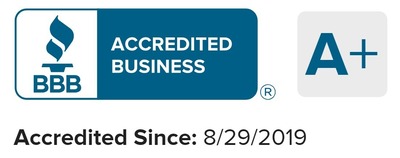Have you ever worried a tenant might be living in their storage unit? While storage units provide flexibility for tenants, they are not meant for full-time living. However, some tenants take advantage of these units and convert them into unlawful residences. As the property owner, it’s important to know the signs someone is living in a storage unit. This allows you to address the issue promptly to avoid potential legal or safety concerns. In this article, we’ll explore the possible signs that a unit is illegally inhabited and the best practices for handling the situation effectively.
10 Signs Someone is Living in a Storage Unit

Frequent Late-Night or Overnight Visits
One clear sign that someone might be living in their storage unit is frequent visits during late hours or overnight stays. Storage units are not designed or permitted for full-time habitation. If a tenant is constantly arriving there a lot when it’s late or on weekends, they might be using it as temporary housing. Increased activity during unauthorized hours warrants taking a closer look.
Personal Items Not Related to Storage
If you notice personal items like clothing, toiletries, food, bedding, furniture, or appliances that are not related to storage, it raises suspicion the tenant is using it as a living space. You can monitor this by conducting periodic checks of occupied units. You should be aware that some homeless individuals may try to disguise living necessities as stored things.
Changed Unit Interior Layout
Tenants changing the interior layout or setup of their storage unit indicate an attempt to make the space more liveable on a long-term basis. You should look for modified shelving, partitioned private rooms, additional lighting, and electrical wiring beyond basic storage organization. Tenants are free to customize units, but structural modifications indicate a more permanent residence than casual storage.
Increased Vehicle Traffic
Monitoring vehicle traffic and parking patterns is another way to spot potential illegal living situations. If you see many different vehicles coming and going over time, as opposed to just the tenant’s vehicle for storage access, it is clarified that multiple people are using that space often. Keep an eye on how many vehicles are parked near a unit and how long they stay there.
Rent Payment Irregularities
If a tenant often pays rent late or missed payments, compared to others, it might mean they are having money problems because they’re not living there in a proper way. Watch for late payments, asking for special favors, or not being able to give normal ID or reference papers. These payment problems don’t for sure show they live there, but it’s a reason to check more closely.
Also Read: Tenant Not Paying Rent? Here’s What To Do As a Landlord
Receiving Mail or Deliveries
A storage facility occupant receiving regular mail, packages, or other personal deliveries to the address of the facility where the unit is located indicates that it is their place of residence. Normally, people don’t use a storage unit address to get their mail. Getting mail there often shows that they might stay there for a long time, not just store things.
Evidence of Cooking or Home-Like Activities
If signs of cooking, such as small appliances or cooking utensils, are seen or close to a place, the tenant prepares meals there. Also, look for signs more aligned with daily living, like laundry, personal grooming, and lounging/relaxing, rather than just using the space to store stuff. These clues show that someone is living there, not just using it to store things.
Complaints or Reports from Neighbors
Pay attention if other tenants or public visitors to your storage facility complain about noise, disturbances, or strange activity from a particular unit after hours. Neighbors usually notice if there’s noise late at night, many visitors, or other things that bother them. These complaints are important because they are early signs of someone living in the unit without permission.
Also Read: How to Deal with Noise Complaints in a Rental Property
Failure to Provide Alternate Contact Information
Tenants legally occupying storage units for possessions should provide landlord contact details beyond their own in case of emergency or inability to access the unit. If a tenant needs secondary contacts for you to reach if needed, it implies they have no alternate address and depend on the storage unit as their sole residence rather than storage alone.
Asking to Extend Hours or Modify Rules
If someone renting a storage unit starts asking to change the rules or access hours in ways that aren’t usual for storing things, it might mean they’re trying to live there. If someone’s behavior or requests seem like trying to make the unit more like a home, it’s a sign to check how they’re using it. Big changes in how they want to use the unit should make you curious.
What To Do If You Suspect Someone Is Living in a Storage Unit?
If you observe signs suggesting a tenant might be living in their storage unit instead of using it for storage purposes, it’s important to take appropriate action. But, you should make sure everything you do is safe, legal, and fair, and you should be nice to the tenants. Here are some steps you can take:
- Politely discuss your concerns with the tenant and explain that storage units cannot be used as permanent housing per facility guidelines and safety codes. Offer to connect them to local housing resources and shelters for assistance.
- Provide a clear timeframe, such as 30 days, for the tenant to vacate the unit and fully transition to approved housing. Monitor the situation and check in periodically to ensure compliance during the transition period.
- If compliance issues arise, follow formal eviction procedures outlined in your facility rules/lease agreement or consult legal counsel before taking further steps. Proper notification is key to avoiding disputes.
- For safety and liability reasons, change unit access locks after vacancy once all personal items are cleared out. Thoroughly inspect and clean the vacated unit.
- Consider waiving penalties/fees for a first residential occupancy offence if the tenant cooperates respectfully with relocation. However, establish that future unauthorized housing use could result in lease termination or bans from renting at your facility.
- Maintain discretion and confidentiality when addressing residential use to avoid embarrassing tenants unnecessarily. Focus on education and resources and allow a dignified transition rather than harsh punitive measures.
- Report repeat or uncooperative offenders to local authorities for persistent code/safety violations since storage units are not zoned for permanent habitation. The protection of all tenants takes priority over individual cases.
[Also Read: Illegal Property Management Practices You Should Avoid]
Final Thoughts
As the storage facility operator, it is important to know the signs of residential use versus intended storage. While habitation violates rental terms, those in need deserve empathy, practical solutions, and a pathway to stability rather than punishment. With tact and understanding of the complex human realities beneath surface violations, most situations can be remedied cooperatively.
FAQs About Unlawful Occupancy of Storage Units
Do I Need Permission to Enter a Renter's Unit?
Yes, tenants expect privacy even in a storage rental. You must provide advance written notice and get approval to enter except in emergencies affecting safety or significant property risk.
What if They Refuse to Leave After Warnings?
As a last resort, you can file for a formal eviction through the court system. Having thoroughly documented your case from the start is important for the eviction process. Pursuing legal termination avoids potential liability issues.
Can a landlord forcibly evict someone from a storage unit?
No, forcible self-help evictions are illegal. Even if residential occupancy violates policy, storage units cannot be treated like conventional housing due to different laws. Confronting or removing renters by force is strongly discouraged due to threats of charges like harassment, assault or improper eviction. Warn renters respectfully in writing first before involving authorities.

Author
Scott Nachatilo is an investor, property manager and owner of OKC Home Realty Services – one of the best property management companies in Oklahoma City. His mission is to help landlords and real estate investors to manage their property in Oklahoma.
 (
(









